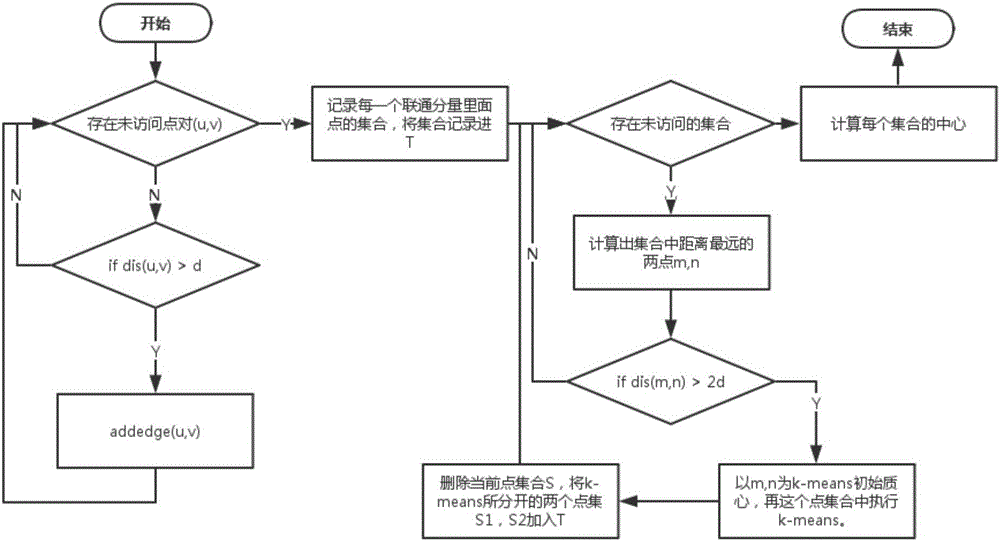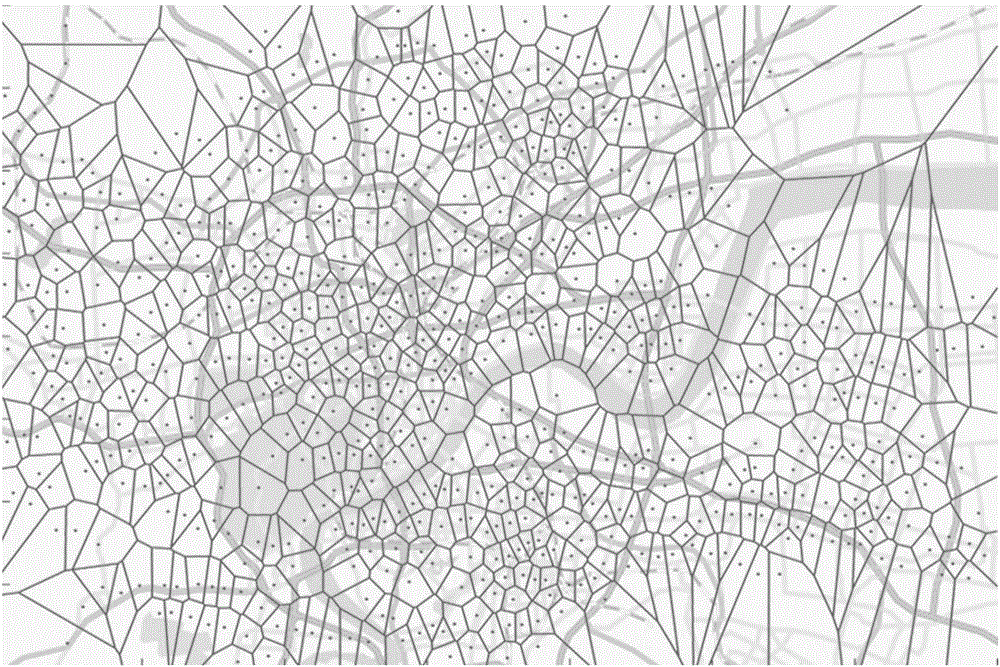Data-driven transit-oriented development urban area division and mining method
A public transportation and urban area technology, applied in the field of TOD urban area division and mining based on urban data, can solve the problems that are not conducive to the development of urban public transportation and cannot well reflect the public transportation center.
- Summary
- Abstract
- Description
- Claims
- Application Information
AI Technical Summary
Problems solved by technology
Method used
Image
Examples
Embodiment Construction
[0049] The embodiment of the present invention provides a data-driven public transportation-oriented urban area division and mining method, such as figure 1 As shown, the method includes:
[0050] Step 1: Use the data of public transportation stations in Hangzhou to establish a public transportation network. The value of d is 800 here. For each point pair (u, v), if the distance (u, v) is less than d, add an edge edge(u, v), eventually forming a public transport network.
[0051] The public transportation lines and station data are as follows.
[0052] This paper studies three types of public transport stops and routes: regular bus, rapid transit, and subway. In the data set we obtained, it directly contains 8255 stops of 641 ordinary bus lines in Hangzhou in February 2015, and 446 stops of 14 BRT lines. The format is shown in Table 1.
[0053] Table 1 Data format of bus lines and stops
[0054] Tab.1Format of bus dataset
[0055]
[0056] Due to the lack of relevant inf...
PUM
 Login to View More
Login to View More Abstract
Description
Claims
Application Information
 Login to View More
Login to View More - R&D
- Intellectual Property
- Life Sciences
- Materials
- Tech Scout
- Unparalleled Data Quality
- Higher Quality Content
- 60% Fewer Hallucinations
Browse by: Latest US Patents, China's latest patents, Technical Efficacy Thesaurus, Application Domain, Technology Topic, Popular Technical Reports.
© 2025 PatSnap. All rights reserved.Legal|Privacy policy|Modern Slavery Act Transparency Statement|Sitemap|About US| Contact US: help@patsnap.com



